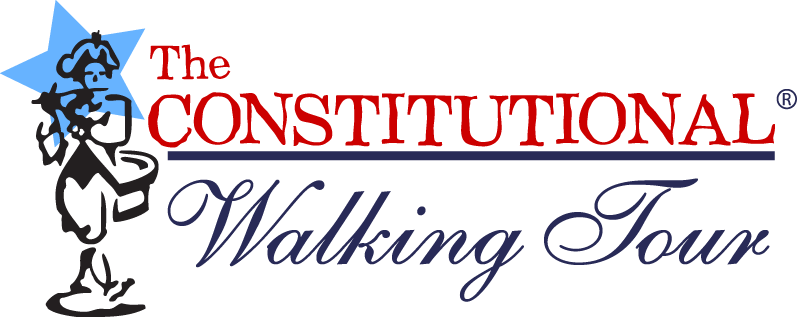Related Posts
- Buy Tickets for The Constitutional Walking Tour of Philadelphia – See 20+ Sites on a Primary Overview of Independence Park, including the Liberty Bell and Independence Hall
- Independence Hall
- Second Continental Congress
- Abigail Adams
American Revolution
Calls for women’s suffrage in America date back to before the American Revolution. As the country was being founded in Philadelphia, Abigail Adams famously wrote to her husband John Adams to request that the rights of women be kept in mind as delegates of the Second Continental Congress declared their independence from Britain and established a new federal government.
“I long to hear that you have declared an independency. And, by the way, in the new code of laws which I suppose it will be necessary for you to make, I desire you would remember the ladies and be more generous and favorable to them than your ancestors. Do not put such unlimited power into the hands of the husbands. Remember, all men would be tyrants if they could. If particular care and attention is not paid to the ladies, we are determined to foment a rebellion, and will not hold ourselves bound by any laws in which we have no voice or representation."

When New Jersey created their Constitution in 1776, voting rights were tied to property ownership and there were not restrictions on women voting if they met all of the criteria set forth for voters. But eventually a law would be passed that barred women from voting in New Jersey in 1807.
Progress toward women’s suffrage was made during this time period and the years that followed, but only for a very narrow class of privileged women. In cases where wealthy landowners passed away and their estates were subsequently controlled by their wives, there was a view that class superseded gender and that women in such cases should be allowed to vote. The first such partial suffrage law passed in Kentucky in 1838 and numerous states followed, but this did not lead to further support for broader women’s suffrage for generations. And even those who supported such limited voting rights for women in this time were often still against any other type of female participation in the political process such as giving speeches and engaging in debate.
Quakers and the Women’s Suffrage Movement
There is not one true origin of the Women’s Suffrage Movement, as the movement grew through the coalescence of many small and fractioned groups into a powerful national movement. But, the Quakers, a religious faction based in part upon the belief in the absolute right of human consciousness and the equality of man, were a source of many early leaders of the Women’s Suffrage Movement. Many also had a common origin in the abolitionist movement, as their beliefs led them to see restrictions on the freedom of any person for their race or their gender, as an affront to a god that they believed was within everyone.
Many of these early Quaker leaders of the movement lived in Pennsylvania and its capital city, Philadelphia, which were founded by William Penn, a Quaker himself who helped to establish religious freedom within Pennsylvania while the colony was still under British rule. One such Quaker leader was Lucretia Mott who moved to Philadelphia with her family and became a leader in the abolitionist and women’s rights movements within the city.

Another Quaker leader of the abolitionist and women’s suffrage movements was Susan B. Anthony. Anthony would go on to become arguably the most well-known women’s suffragist and the Constitutional Amendment that would eventually give women the right to vote in the United States was sometimes referred to as the Susan B. Anthony amendment prior to its ratification, as it was Anthony and fellow suffragist, Elizabeth Cady Stanton, who arranged for the amendment to be presented to the United States Congress in 1878.

Racial Divide within the Women’s Suffrage Movement
Despite many shared origins between the Women’s Suffrage Movement and the Abolitionist Movement, there were still divisions within the movements. When Lucretia Mott and Elizabeth Cady Stanton attended the World’s Anti-Slavery Convention in 1840, the men voted to exclude them, and other women who attended, from participating in the proceedings. In America, many abolitionist societies became fiercely divided over the prospects of women such as Mott and Stanton giving speeches before their organizations.
Likewise, within the Women’s Suffrage Movement, non-white suffragists often faced discrimination and historically their contributions to the movement have been diminished. Sojourner Truth’s famous “Ain’t I a Woman?” speech in 1851 called attention to the moral hypocrisy of fighting for the rights of women while discriminating against others on the basis of their race.
Ida B. Wells was a women’s rights activist and a founder of the NAACP who faced discrimination within the Women’s Suffrage movement due to her race. At the 1913 Women’s Suffrage Parade in Washington D.C., Wells was asked to march in the back of the parade with other black activists so as not to offend some of the white activists marching in the parade. Wells however refused to comply with demands from the parade organizers to remain segregated in the back of the parade.

Despite these conflicts though, more often than not, suffragists, abolitionists and civil rights advocates were often united in their desire for greater freedom and equality for all Americans.
Seneca Falls Convention
The Seneca Falls Convention took place in 1848 and is recognized as the first women’s rights convention. At the convention the Declaration of Sentiments was produced, which demanded a women’s right to vote among other statements on the equality of women. Among those who signed the Declaration included Lucretia Mott, Elizabeth Cady Stanton and Frederick Douglass.

The Declaration of Sentiments was widely printed and distributed and became a key piece of literature that was instrumental in increasing the size of the Women’s suffrage movement. The Seneca Falls Convention also inspired the organization of similar women’s rights conventions across the nation.
Women’s Suffrage in the Western United States
Women’s Suffrage advocates initially found much greater success in gaining suffrage in the west of the United States, as opposed to the East Coast. Why this proved to be true is believed to be due to a combination of different factors. The West Coast was still in the process of being settled as the Women’s Suffrage Movement developed and thus a political system designed to exclude women had not yet become ingrained within political character of these western states. Additionally, in the early years of the settlement of the American west, men greatly outnumbered women and women’s suffrage was a way to make living in the western settlements more appealing to women.
Wyoming was the first territory to grant women suffrage in 1869. Decades later when Wyoming was fighting to become a state, the leaders of Wyoming demanded that women would be allowed to continue to vote in Wyoming as part of any agreement for the state to join the union. When the United States Congress initially denied this request, Wyoming delivered the following message to Congress:
“We will remain out of the Union one hundred years rather than come in without the women”
Congress would eventually give in and allow Wyoming to become the 44th state in 1890, and the first to give women the right to vote. Colorado, Utah, Idaho, Washington, California, Arizona, Kansas, Oregon, Montana, and Nevada would all follow over the course of the next 25 years. By leading the way, these western states were able to normalize women’s suffrage in America and their legislators in Washington D.C. led the charge on national changes.
The Women’s Liberty Bell
The Liberty Bell had long been a symbol of not just the liberties already held by Americans but of the organizations fighting to increase those liberties. By 1915 however the Liberty Bell had become symbolic of an unfulfilled promise to many women and it was decided that a new Liberty Bell would be cast. Dubbed the “Justice Bell,” the bell was designed to be a replica of the Liberty Bell. It was said that the Justice Bell would not sound until women had the right to vote.
Today the Women’s Liberty Bell is on display at Valley Forge National Park inside of the Washington Memorial Chapel.

The 19th Amendment
Initially introduced to congress all the way back in 1878, the 19th Amendment was not passed by the House of Representatives until May 21st, 1919 and then subsequently passed through the Senate a few weeks later on June 4th. The constitutional amendment then needed to be ratified by 36 states in order to become law. Tennessee became the 36th state to ratify the amendment on August 18th 1920 and with that, a decades long fight for Women’s Suffrage in the United States of America came to a close.
On September 25th 1920, an enormous celebration took place behind Independence Hall in Philadelphia. The Women’s Liberty Bell rang for the first time on that day.




